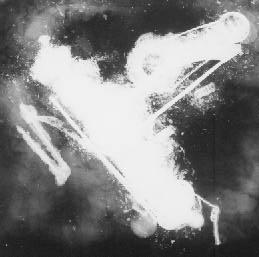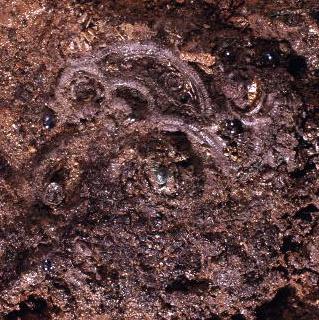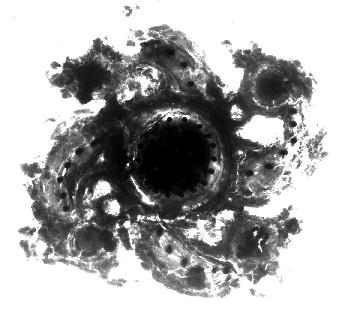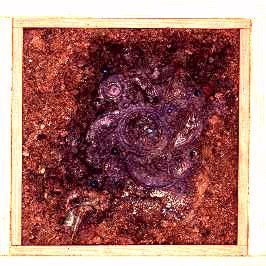DISINTEGRATING FIBULĘ
A fibula is a pin, used to decorate and to fasten clothes. It can be
quite simple or richly decorated.
Soil and corrosion hold together the objects as they lie in the ground.
Fibulę can be so brittle that they fall apart as soon as they are excavated.
Conservators used to clean this type of object as thoroughly as they dared.
After conservation and re-assembly the object was almost impossible to
handle without it crumbling.


The Rosette fibula from Bjergby, revealed in a radiograph
of the clump of soil that enclosed it when it was discovered in 1973. The
conservators extracted all the pieces, cleaned them and assembled them
with glue and wax to form a complete, but very delicate, object. In the
following years, piece after piece has fallen away (picture below). The
fibula cannot be handled. It cannot even be repaired. 
We would not, today, excavate a brittle fibula so completely.
It would instead be allowed to remain in the soil. The whole lump would
be impregnated with resin, which can be dissolved later. The hidden pieces
of the fibula can be seen in X-ray photographs. The museum staff can now
handle and exhibit the fibula, and conservators in the future can continue
to work on it.


The picture on the right is a radiograph of the lump
of soil containing a fibula discovered in 1978 in Vorbasse. The X-rays
showed that the fibula was deeply corroded. The conservator did not separate
it from the soil. The object and the soil were impregnated with an acrylic
lacquer. The surface was then exposed. The object in its bed of soil is
now displayed in a box (below).

On to the next showcase: Lurs





